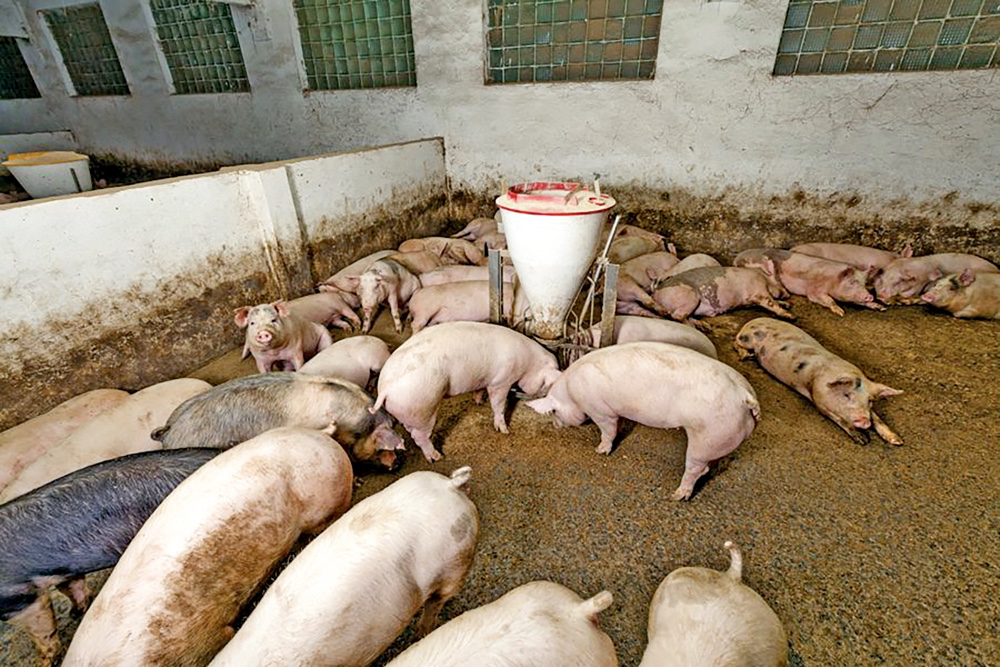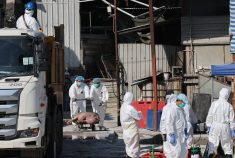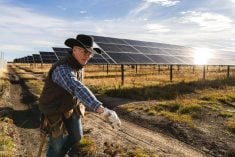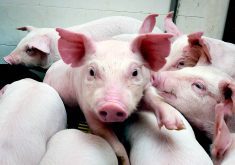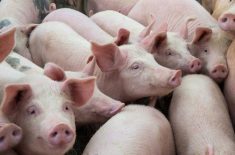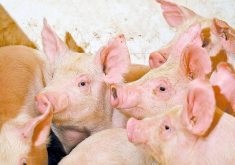The beef sector is regaining some optimism, but pork producers are still fighting to stay afloat.

“Our producers are losing a lot of money,” said Darcy Fitzgerald, executive director of Alberta Pork. “It truly is, right now, related to COVID-19. The price that we’re seeing that they’re being paid, is related to what is going on in the U.S. marketplace.
“We don’t really have a choice at this time to do anything different. We have our prices fixed with our largest competitor in the world, who happens to sit next door to us, and who we sell pigs and pork to.”
Canadian prices are based off American ones — and those have plunged because the pandemic has closed or slowed down packing plants and created a backlog of well over one million pigs (with that number expected to double by the end of the year).
Read Also

Grazing ‘sweet spot’ boosts pasture performance
Timing-focused approach to pasture management touted to boost forage growth, livestock gains while also cutting farmer labour and inputs
“In Canada, it’s a different story,” said Fitzgerald. “We don’t have enough pigs for the packers that we have here. There has been no shortage of demand for our pigs, because there is a shortage of pigs going into those packing plants.”
The disconnect between demand and price has Alberta Pork, its sister boards in Western Canada and the Canadian Pork Council calling for a new pricing regime — one based on the cut-out (essentially the value of a processed pig carcass). After meeting with two big processors, Maple Leaf Foods and Donald’s Fine Foods, they won a measure of relief.
“Maple Leaf Foods announced it would add $20 per pig to all the pigs it purchased and that would go on for 13 weeks as long as all the producers extended their contracts by one more year,” said Fitzgerald.
Before the groups could meet with Olymel, that processor offered an extra $20 over the price it was paying before.
“They were all pretty similar, but the Olymel solution is a little longer term,” he said. “You can pick the contract you want to be on. Our hope is to sit down with Olymel and have that conversation.”

Despite those concessions, the gap between the two sides is large — hog producers in Western Canada are losing as much as $50 per animal. Normally, prices (which rise in summer) would be over $200 a pig, but producers are lucky if they get $150 or $160 per animal, said Fitzgerald.
“The prices that we’re seeing, these are not prices that happen at this time of year,” he said. “Demand is higher than it has been at any time in the world. But because we’re priced off the U.S., it’s a huge problem.”
If there aren’t significant changes to the pricing scheme, the hog industry will look a lot different a year from now, he said.
“Producers just can’t go on losing money. The outlook is really bad. But there’s no shortage in the demand for meat.”
Cattle prospects brighten
While the pork situation is dire, the beef industry’s prospects have improved greatly.
Two months ago, there was a backlog of 130,000 cows because of packing plant closures and slowdowns caused by COVID. That prompted the Canadian Cattlemen’s Association to predict the Canadian beef industry would lose half a billion dollars just on market-ready cattle by the end of June.
But the situation has changed considerably, said CCA president Bob Lowe.
“There’s a sense of optimism that there wasn’t two months ago. Things are working,” said Lowe, owner of Bear Trap Feeders near Nanton.
The big two processors, Cargill at High River and JBS at Brooks, are now back to full production.
“The cattle are moving,” said Lowe. “There’s a bit of a backlog to get through, but I think we’re getting through that.”
That has eased fears that prices for feeder cattle would crash during the fall run.
“What may cancel that out is that there wasn’t a lot of replacement cattle in March or April,” he said. “That may create a hole so we can get the ones that weren’t processed moved out in an orderly fashion.”
The cattle that are being processed now have been on feed for longer, so they are all bigger than normal.
“We’re selling cattle 50 or 100 pounds heavier than you’d expect them to be. That’s just a whole bunch more meat.”
However, demand for beef is still high, said Lowe.
Prices for cattle are low, but Lowe said that is based on the market situation.
“2020 was going to be the year to sell protein,” he said. “COVID-19 came along and decimated the world economy. The United States, which dominates our world markets, had record numbers of cattle in feedlots pre-COVID,” he said.
Those two factors — a battered global economy and record numbers of cattle on feed — have brought the prices down.
But while there is still some apprehension about the fall run — and the possibility the pandemic could cause a plant to shut down — the cattle industry is trying to stay positive.
“We’re still in a protein deficient world, and people still need protein,” said Lowe.
‘No relief’ for hog farmers
But that’s not helping hog producers at the moment.
A study commissioned by the Canadian Pork Council laid out the case for a pricing system based on cut-out (which is used in Quebec). And while discussions with the three major pork processors are set to continue, that report said it is “difficult to imagine that packers will voluntarily comply with a practice that may have the effect of reducing their margins.”
The other potential source of relief looks even less promising. Current government support programs aren’t working for hog producers, said Fitzgerald.
“There’s no ability for us to trigger the dollars in AgriStability,” he said. “There’s no relief from the government and in the pricing situation, our producers are losing a lot of money.”
Meanwhile, American hog producers have received at least $1.6 billion from Washington’s Coronavirus Food Assistance Program and are asking for billions more.
“Our competitors are getting help and coming into our country,” said Fitzgerald.
Government needs to recognize existing business risk management programs don’t work for hog sectors here and that something needs to change, he said.


